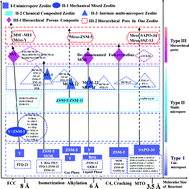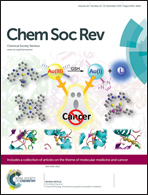Recent advances of pore system construction in zeolite-catalyzed chemical industry processes
Abstract
The kaleidoscopic applications of zeolite catalysts (zeo-catalysts) in petrochemical processes has been considered as one of the major accomplishments in recent decades. About twenty types of zeolite have been industrially applied so far, and their versatile porous architectures have contributed their most essential features to affect the catalytic efficiency. This review depicts the evolution of pore models in zeolite catalysts accompanied by the increase in industrial and environmental demands. The indispensable roles of modulating pore models are outlined for zeo-catalysts for the enhancement of their catalytic performances in various industrial processes. The zeolites and related industrial processes discussed range from the uni-modal micropore system of zeolite Y (12-ring micropore, 12-R) in fluid catalytic cracking (FCC), zeolite ZSM-5 (10-R) in xylene isomerization and SAPO-34 (8-R) in olefin production to the multi-modal micropore system of MCM-22 (10-R and 12-R pocket) in aromatic alkylation and the hierarchical pores in FCC and catalytic cracking of C4 olefins. The rational construction of pore models, especially hierarchical features, is highlighted with a careful classification from an industrial perspective accompanied by a detailed analysis of the theoretical mechanisms.

- This article is part of the themed collection: Recent Advances in Zeolite Chemistry and Catalysis

 Please wait while we load your content...
Please wait while we load your content...